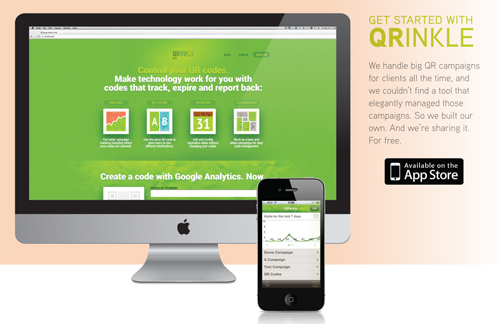The not-so-secret Secret behind QR Codes.
QR codes (short for quick response codes) are popping up everywhere. In the last 12 months, there has been a mountain of buzz surrounding them, and a hockey-stick growth rate on usage. One report put QR code activity up 314 percent from the first quarter of 2011 to the first quarter of 2012. And, everyday, more marketers are including them as a standard part of their marketing plans.
Why?
Because mobile marketing is the fastest growing area of marketing.
The mobile phone is the most ubiquitous device out there. And because more than half of all Americans are now smartphone users, it’s where your customers are accessing information about your products and services. By 2014, ComScore expects more people to access the Web via smartphones than by desktops or laptops, so QR codes are a perfect tool.
Here are just a few reasons to start using QR codes:
- One in five U.S. smartphone users scanned a QR code in a retail store in 2011.
- One third of consumers younger than 40 years old use QR codes at least a couple of times per month.
- One third of QR code scanners did so in response to a coupon or offer.
- One quarter of QR code scanners did so to receive information on an event.
 QR codes are an easy-to-use, low-cost way to engage and activate mobile users for any company, large or small. But keep in mind that, while it’s easy to create and throw a QR code out into the market, creating a great online experience that encourages repeat use is much more difficult. The fact is, the content beyond your QR code is arguably the most critical element of success in code usage.
QR codes are an easy-to-use, low-cost way to engage and activate mobile users for any company, large or small. But keep in mind that, while it’s easy to create and throw a QR code out into the market, creating a great online experience that encourages repeat use is much more difficult. The fact is, the content beyond your QR code is arguably the most critical element of success in code usage.
Here are some basic QR code content guidelines:
- Make the destination mobile friendly. Many people don’t do this and it creates a bad experience.
- Use video and motion graphics where possible.
- Apply best practices. The code should be at least a
- 1” x 1” square, with sufficient white space around it.
- Make sure your code isn’t too complex so it can be adequately read by the average smartphone. If the URL is too long or you’ve included Google tracking tags, use a URL that’s shorter to improve the readability of the code.
- Try to ensure the code’s location is mobile accessible. Don’t use QR codes in the subway, on high billboards or in places where it is hard to scan.
- Don’t assume a user gets it. Explain how to use the code and where it will take them.
- Provide details on how people can scan your code if they are not familiar. And give them links to download a code reader.
The beauty of QR codes is their flexibility and trackability. Through stats, you can understand more about your customers in order to develop better campaigns. You can change the destination of a QR code at any point. Or even do A/B testing. The possibilities are endless and it’s a great way to get into mobile marketing right now.
Whether you love or hate QR codes, they’re becoming progressively more present and useful as they mature from hype to the frontline of marketing. And, as a mobile engagement technique, they are something you can and should put to use today.




